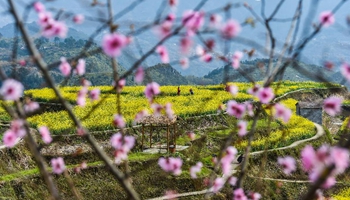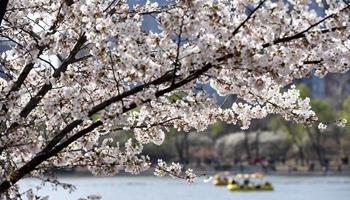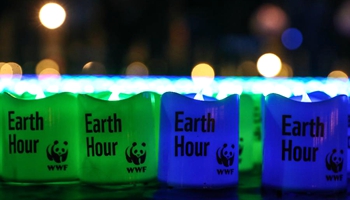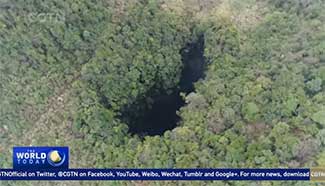by Raul Menchaca
HAVANA, March 26 (Xinhua) -- It is difficult to imagine that the modern plant of the San Jose rum company was just 20 hectares of largely obsolete land twenty years ago, some 30 kilometers southeast of Havana.
In the Cuban province of Mayabeque stands the world's largest rum processing plant. It churns out rum commercialized under the Havana Club brand for sale in over 120 countries including China. It is one of Cuba's main sources of exports.
With an investment of 60 million U.S. dollars, the plant was built and opened in January 1997. It is now run by the joint venture Havana Club International S.A., founded four years ago as an association between the state-run Cuba Ron and France's Pernod Ricard.
The plant contains a distillery, areas for aging and mixing, as well as a bottling section, creating a fully equipped and modern plant capable of processing 30,000 liters a day of Cuba's most emblematic drink.
Eight types of rum are produced here, classified according to the type of mixing and length of aging. These decisions are made by master rum-makers, a dwindling group of experts with its number no more than 10 nationwide now, who hold their secrets close to their hearts.
Back in 1995, the Havana Club only produced around 500,000 nine-liter boxes of rum, but it has grown at a steady pace to 4.2 million boxes in 2016.
Currently, the plant is seeking to continue growing through another heavy investment, which will add two new aging areas, a third bottling assembly line, and the expansion of storage for raw materials and finished products.
"We are the cradle of light rum," the plant's communications expert Yaima Rodriguez told Xinhua. She has been in charge of promoting different types of rum to the world for seven years.
Thousands of barrels line the sides of the plant, placed with exquisite symmetry, for the drink to age and blend naturally, with no chemical additives to speed up the process, change the taste or alter its color.
All types of rum have a strong alcohol base, of between 74-76 degrees. They are then mixed successively with water and distilled sugarcane, before being aged in barrels of American white oak.
However, the final say rests with the master rum-makers, who are uniquely capable of coming up with new brands, although their recipes are kept sealed away.
According to the specialized Drinks International magazine, the Havana Club rum ranks 21st among the top 100 producers of spirits, while being unable to access the U.S. market, which accounts for 40 percent of international demand.
For a few years now, the company has developed its Habanista brand, with the intention of selling it to the U.S. market once the country lifts its economic embargo against Cuba.
Executives believe that the open-up of the U.S. market would represent a true explosion for the Cuban rum sector.












